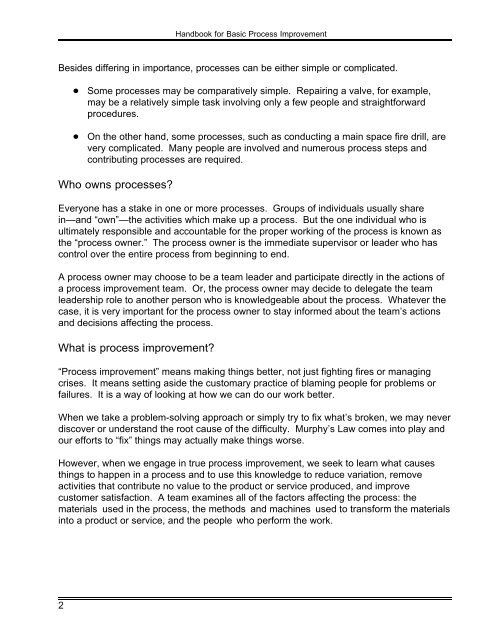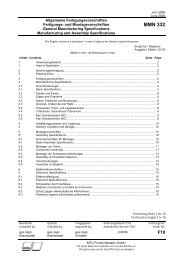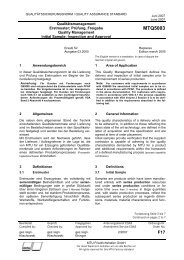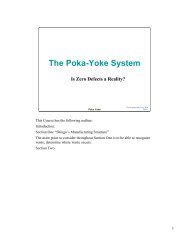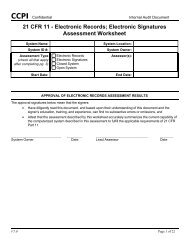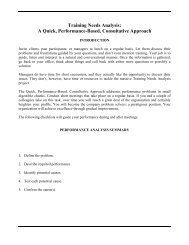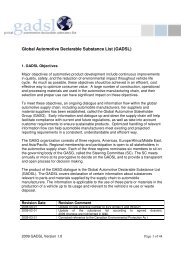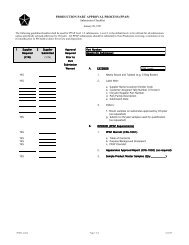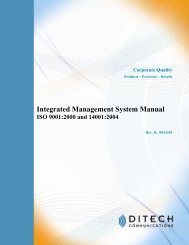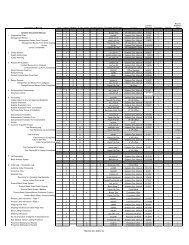Handbook for Basic Process Improvement - Balanced Scorecard ...
Handbook for Basic Process Improvement - Balanced Scorecard ...
Handbook for Basic Process Improvement - Balanced Scorecard ...
Create successful ePaper yourself
Turn your PDF publications into a flip-book with our unique Google optimized e-Paper software.
2<br />
<strong>Handbook</strong> <strong>for</strong> <strong>Basic</strong> <strong>Process</strong> <strong>Improvement</strong><br />
Besides differing in importance, processes can be either simple or complicated.<br />
Some processes may be comparatively simple. Repairing a valve, <strong>for</strong> example,<br />
may be a relatively simple task involving only a few people and straight<strong>for</strong>ward<br />
procedures.<br />
On the other hand, some processes, such as conducting a main space fire drill, are<br />
very complicated. Many people are involved and numerous process steps and<br />
contributing processes are required.<br />
Who owns processes?<br />
Everyone has a stake in one or more processes. Groups of individuals usually share<br />
in—and “own”—the activities which make up a process. But the one individual who is<br />
ultimately responsible and accountable <strong>for</strong> the proper working of the process is known as<br />
the “process owner.” The process owner is the immediate supervisor or leader who has<br />
control over the entire process from beginning to end.<br />
A process owner may choose to be a team leader and participate directly in the actions of<br />
a process improvement team. Or, the process owner may decide to delegate the team<br />
leadership role to another person who is knowledgeable about the process. Whatever the<br />
case, it is very important <strong>for</strong> the process owner to stay in<strong>for</strong>med about the team’s actions<br />
and decisions affecting the process.<br />
What is process improvement?<br />
“<strong>Process</strong> improvement” means making things better, not just fighting fires or managing<br />
crises. It means setting aside the customary practice of blaming people <strong>for</strong> problems or<br />
failures. It is a way of looking at how we can do our work better.<br />
When we take a problem-solving approach or simply try to fix what’s broken, we may never<br />
discover or understand the root cause of the difficulty. Murphy’s Law comes into play and<br />
our ef<strong>for</strong>ts to “fix” things may actually make things worse.<br />
However, when we engage in true process improvement, we seek to learn what causes<br />
things to happen in a process and to use this knowledge to reduce variation, remove<br />
activities that contribute no value to the product or service produced, and improve<br />
customer satisfaction. A team examines all of the factors affecting the process: the<br />
materials used in the process, the methods and machines used to trans<strong>for</strong>m the materials<br />
into a product or service, and the people who per<strong>for</strong>m the work.


